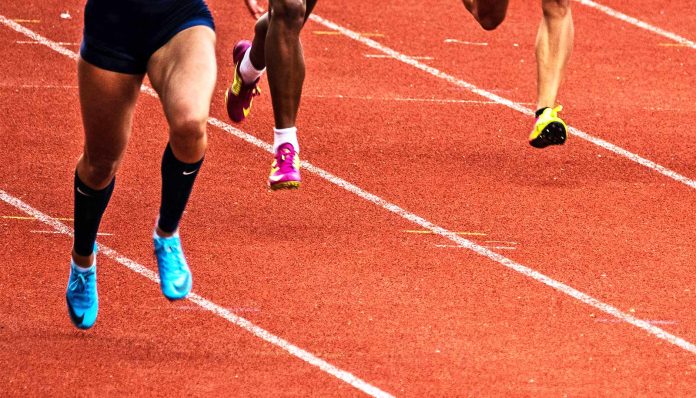
New research suggests that high-tech running shoes, known as “super spikes,” might significantly boost athletic performance.
Published in the International Journal of Sports Physiology and Performance, the study compared the running efficiency of super spikes with traditional track spikes.
Running economy measures how efficiently the body uses oxygen, which is crucial for performance.
The researchers tested a small group of men using both types of spikes. They found that runners using super spikes had about a 2% better running economy than those using traditional spikes.
This improvement could translate into a 1%-1.5% increase in running speed, according to Geoff Burns, a coauthor of the study and an adjunct assistant professor of kinesiology at the University of Michigan.
Burns also works as a sport physiologist with the US Olympic and Paralympic Committee.
For example, a runner completing a 10,000-meter race in 30 minutes could see an improvement of around 25 seconds with the enhanced running economy provided by super spikes. The 10,000-meter race, which is about 6 miles long, has world records of 28:54 for women and 26:11 for men.
Burns highlights the significant impact of even a slight improvement in running economy. “A 1.5%-2.0% increase in economy for an elite runner could be the difference between contending for a medal and not even qualifying for the Olympic Games,” he says.
This improvement is also important for non-elite runners, such as high school and NCAA athletes, as it could open up new opportunities for them.
Super spikes use special foams and plates that make them lighter, softer, and more springy. This advanced footwear technology has been used in running shoes since 2016. During the 2020 Olympics, not all track and field athletes had access to super spikes, leading to debates about fairness. However, as more sponsors now produce spikes with this technology, it’s likely that most athletes will wear them in the Paris Olympics.
The study also compared super spikes with the latest generation of running shoes and found that, despite being heavier, these shoes offered similar running economy benefits.
Burns explains that some athletes benefit more from cushioning, while others benefit from reduced weight. Since it’s highly individualized, athletes should choose whichever feels most comfortable to them.
So, what does this mean for the upcoming Paris Olympic Games?
Burns believes we might see some Olympic records broken and expects a higher number of fast times due to the widespread use of super spikes.
Other researchers from the University of Michigan and St. Edward’s University also contributed to this study.



